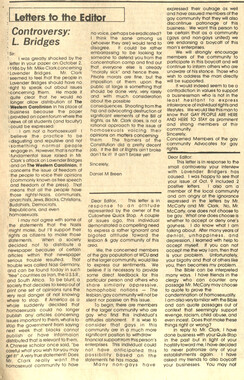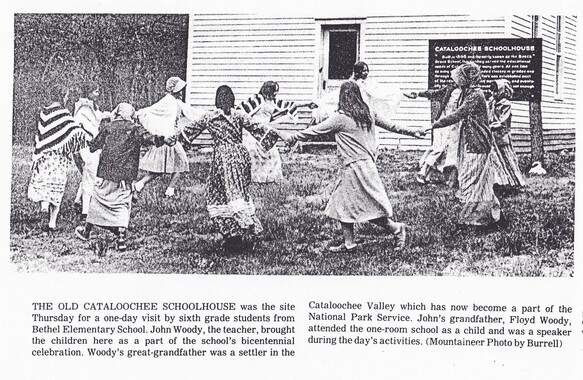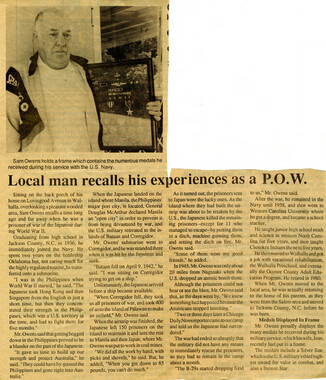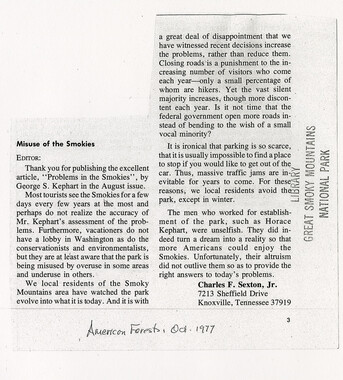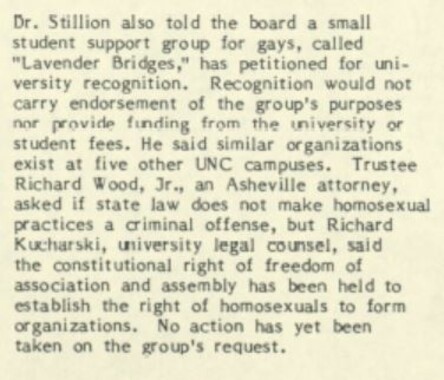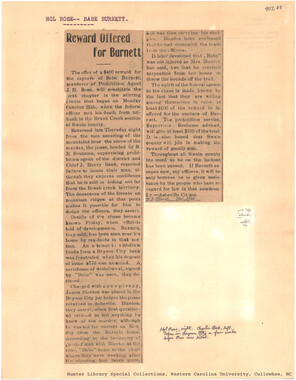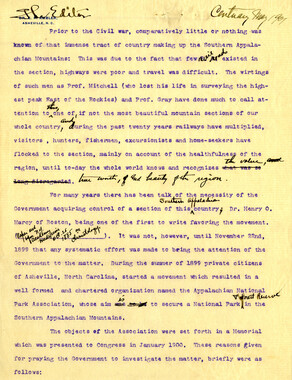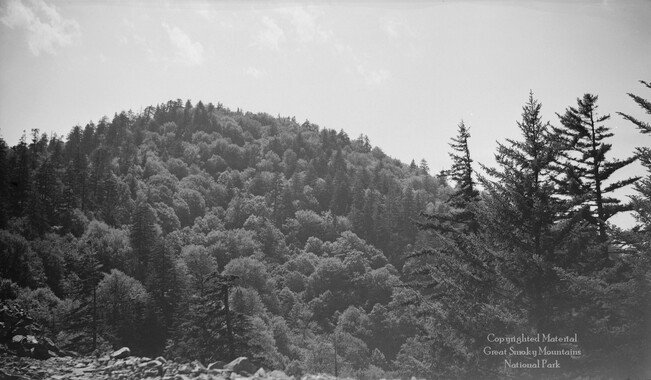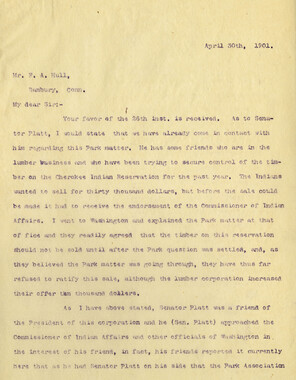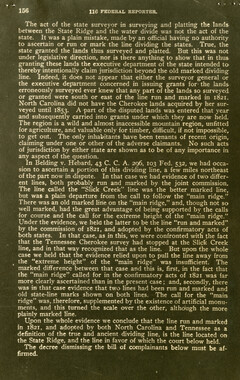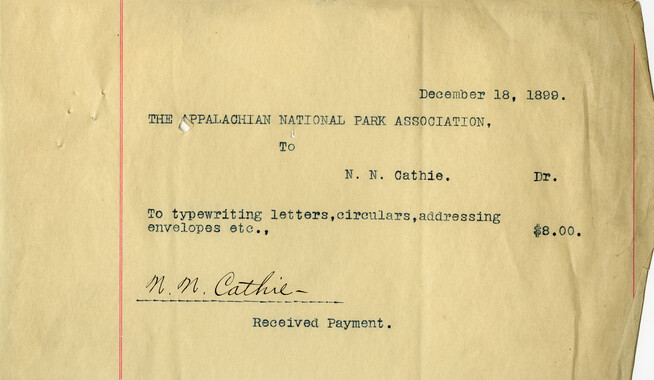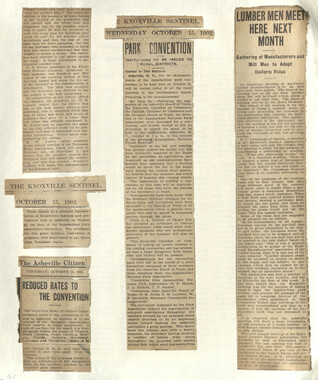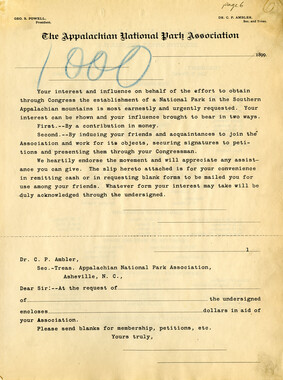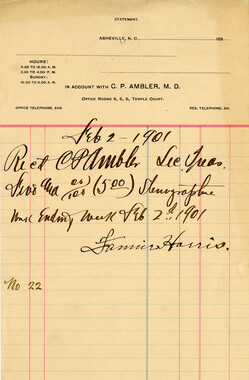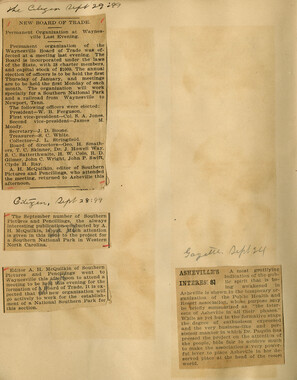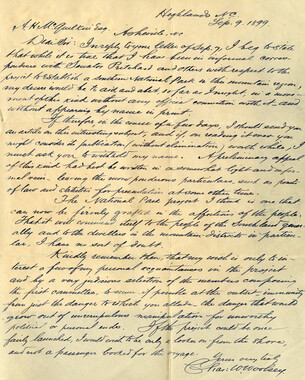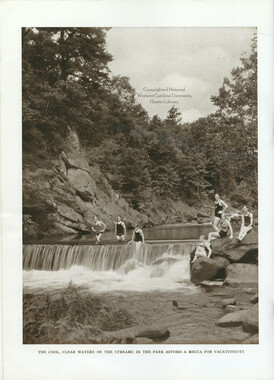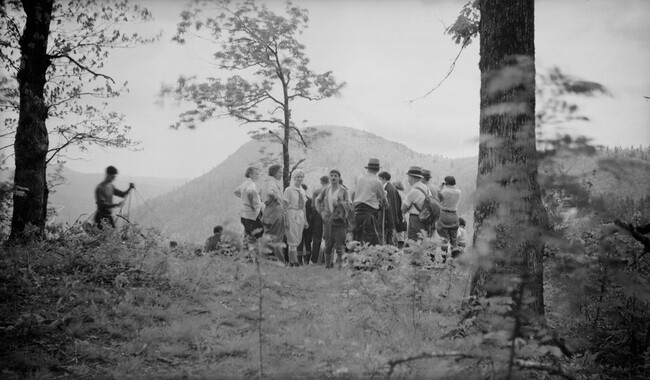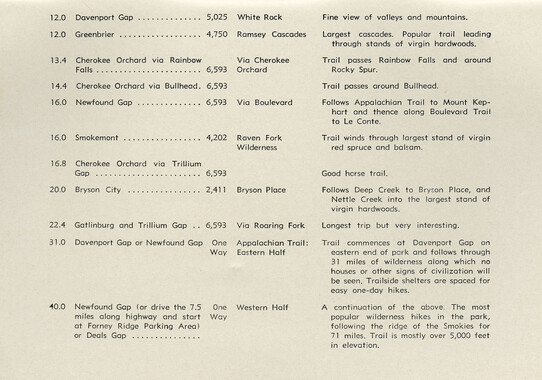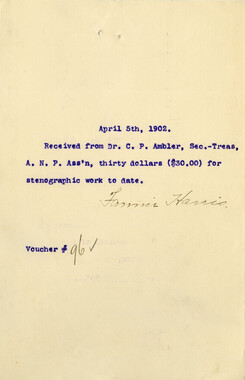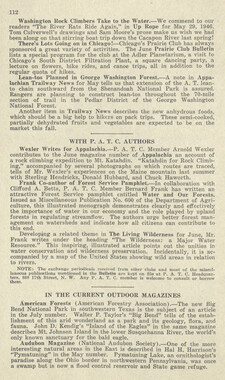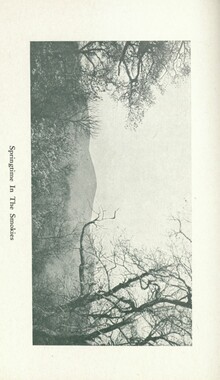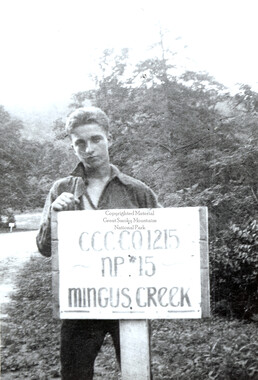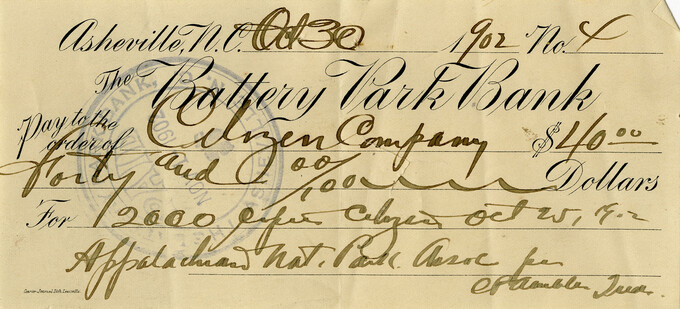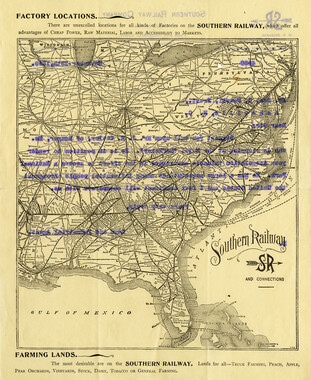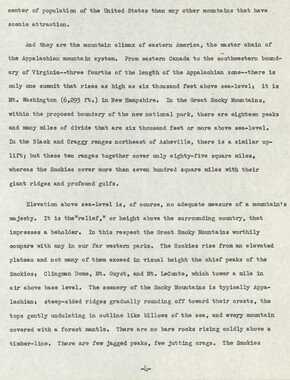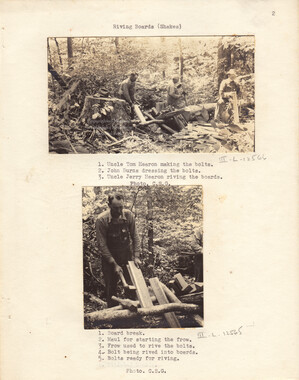Western Carolina University (20)
View all
- Canton Champion Fibre Company (2308)
- Cherokee Traditions (291)
- Civil War in Southern Appalachia (165)
- Craft Revival (1942)
- Great Smoky Mountains - A Park for America (2766)
- Highlights from Western Carolina University (430)
- Horace Kephart (941)
- Journeys Through Jackson (154)
- LGBTQIA+ Archive of Jackson County (85)
- Oral Histories of Western North Carolina (314)
- Picturing Appalachia (6772)
- Stories of Mountain Folk (413)
- Travel Western North Carolina (160)
- Western Carolina University Fine Art Museum Vitreograph Collection (129)
- Western Carolina University Herbarium (92)
- Western Carolina University: Making Memories (708)
- Western Carolina University Publications (2283)
- Western Carolina University Restricted Electronic Theses and Dissertations (146)
- Western North Carolina Regional Maps (71)
- World War II in Southern Appalachia (131)
University of North Carolina Asheville (6)
View all
- Appalachian National Park Association (53)
- Berry, Walter (76)
- Champion Fibre Company (5)
- Fromer, Irving Rhodes, 1913-1994 (70)
- Grant, George Alexander, 1891-1964 (96)
- Kephart, Horace, 1862-1931 (23)
- Masa, George, 1881-1933 (17)
- North Carolina Park Commission (105)
- Roth, Albert, 1890-1974 (142)
- Schenck, Carl Alwin, 1868-1955 (1)
- Stearns, I. K. (2)
- Thompson, James Edward, 1880-1976 (45)
- Weaver, Zebulon, 1872-1948 (55)
- Wilburn, Hiram Coleman, 1880-1967 (72)
- Allanstand Cottage Industries (0)
- Bennett, Kelly, 1890-1974 (0)
- Brasstown Carvers (0)
- Cain, Doreyl Ammons (0)
- Carver, George Washington, 1864?-1943 (0)
- Cathey, Joseph, 1803-1874 (0)
- Champion Paper and Fibre Company (0)
- Cherokee Indian Fair Association (0)
- Cherokee Language Program (0)
- Crittenden, Lorraine (0)
- Crowe, Amanda (0)
- Edmonston, Thomas Benton, 1842-1907 (0)
- Ensley, A. L. (Abraham Lincoln), 1865-1948 (0)
- George Butz (BFS 1907) (0)
- Goodrich, Frances Louisa (0)
- Heard, Marian Gladys (0)
- Kephart, Calvin, 1883-1969 (0)
- Kephart, Laura, 1862-1954 (0)
- Laney, Gideon Thomas, 1889-1976 (0)
- McElhinney, William Julian, 1896-1953 (0)
- Niggli, Josephina, 1910-1983 (0)
- Osborne, Kezia Stradley (0)
- Owens, Samuel Robert, 1918-1995 (0)
- Penland Weavers and Potters (0)
- Rhodes, Judy (0)
- Roberts, Vivienne (0)
- Sherrill's Photography Studio (0)
- Smith, Edward Clark (0)
- Southern Highland Handicraft Guild (0)
- Southern Highlanders, Inc. (0)
- Stalcup, Jesse Bryson (0)
- United States. Indian Arts and Crafts Board (0)
- USFS (0)
- Vance, Zebulon Baird, 1830-1894 (0)
- Western Carolina College (0)
- Western Carolina Teachers College (0)
- Western Carolina University (0)
- Western Carolina University. Mountain Heritage Center (0)
- Whitman, Walt, 1819-1892 (0)
- Williams, Isadora (0)
- 1810s (1)
- 1840s (1)
- 1850s (2)
- 1860s (3)
- 1870s (4)
- 1880s (7)
- 1890s (64)
- 1900s (294)
- 1910s (227)
- 1920s (461)
- 1930s (1585)
- 1940s (82)
- 1950s (15)
- 1960s (13)
- 1970s (47)
- 1980s (14)
- 1990s (16)
- 2000s (31)
- 2010s (1)
- 1600s (0)
- 1700s (0)
- 1800s (0)
- 1820s (0)
- 1830s (0)
- 2020s (0)
- Appalachian Region, Southern (81)
- Asheville (N.C.) (3)
- Avery County (N.C.) (6)
- Blount County (Tenn.) (159)
- Buncombe County (N.C.) (204)
- Cherokee County (N.C.) (10)
- Clay County (N.C.) (3)
- Graham County (N.C.) (108)
- Great Smoky Mountains National Park (N.C. and Tenn.) (447)
- Haywood County (N.C.) (262)
- Henderson County (N.C.) (13)
- Jackson County (N.C.) (58)
- Knox County (Tenn.) (21)
- Knoxville (Tenn.) (11)
- Lake Santeetlah (N.C.) (10)
- Macon County (N.C.) (25)
- Madison County (N.C.) (14)
- McDowell County (N.C.) (5)
- Mitchell County (N.C.) (7)
- Polk County (N.C.) (2)
- Qualla Boundary (22)
- Rutherford County (N.C.) (16)
- Swain County (N.C.) (516)
- Transylvania County (N.C.) (36)
- Watauga County (N.C.) (2)
- Waynesville (N.C.) (2)
- Yancey County (N.C.) (34)
- Aerial Views (3)
- Articles (1)
- Artifacts (object Genre) (4)
- Bibliographies (1)
- Clippings (information Artifacts) (77)
- Drawings (visual Works) (174)
- Envelopes (2)
- Financial Records (9)
- Fliers (printed Matter) (34)
- Guidebooks (1)
- Interviews (15)
- Land Surveys (102)
- Letters (correspondence) (219)
- Manuscripts (documents) (90)
- Maps (documents) (86)
- Memorandums (14)
- Minutes (administrative Records) (20)
- Negatives (photographs) (282)
- Newsletters (12)
- Paintings (visual Works) (1)
- Pen And Ink Drawings (1)
- Photographs (1657)
- Portraits (91)
- Postcards (15)
- Publications (documents) (107)
- Scrapbooks (3)
- Sheet Music (1)
- Songs (musical Compositions) (2)
- Sound Recordings (7)
- Speeches (documents) (11)
- Transcripts (46)
- Aerial Photographs (0)
- Albums (books) (0)
- Biography (general Genre) (0)
- Cards (information Artifacts) (0)
- Crafts (art Genres) (0)
- Depictions (visual Works) (0)
- Design Drawings (0)
- Facsimiles (reproductions) (0)
- Fiction (general Genre) (0)
- Glass Plate Negatives (0)
- Internegatives (0)
- Newspapers (0)
- Occupation Currency (0)
- Periodicals (0)
- Personal Narratives (0)
- Plans (maps) (0)
- Poetry (0)
- Programs (documents) (0)
- Questionnaires (0)
- Slides (photographs) (0)
- Specimens (0)
- Text Messages (0)
- Tintypes (photographs) (0)
- Video Recordings (physical Artifacts) (0)
- Vitreographs (0)
- Appalachian National Park Association Records (336)
- Carlos C. Campbell Collection (282)
- Cataloochee History Project (64)
- George Masa Collection (89)
- Hiram C. Wilburn Papers (28)
- Historic Photographs Collection (236)
- Horace Kephart Collection (126)
- Humbard Collection (33)
- Jim Thompson Collection (44)
- Love Family Papers (11)
- Map Collection (12)
- R.A. Romanes Collection (10)
- Smoky Mountains Hiking Club Collection (616)
- Zebulon Weaver Collection (107)
- A.L. Ensley Collection (0)
- Appalachian Industrial School Records (0)
- Axley-Meroney Collection (0)
- Bayard Wootten Photograph Collection (0)
- Bethel Rural Community Organization Collection (0)
- Blumer Collection (0)
- C.W. Slagle Collection (0)
- Canton Area Historical Museum (0)
- Cherokee Studies Collection (0)
- Daisy Dame Photograph Album (0)
- Daniel Boone VI Collection (0)
- Doris Ulmann Photograph Collection (0)
- Elizabeth H. Lasley Collection (0)
- Elizabeth Woolworth Szold Fleharty Collection (0)
- Frank Fry Collection (0)
- Gideon Laney Collection (0)
- Hazel Scarborough Collection (0)
- Hunter and Weaver Families Collection (0)
- I. D. Blumenthal Collection (0)
- Isadora Williams Collection (0)
- Jesse Bryson Stalcup Collection (0)
- John B. Battle Collection (0)
- John C. Campbell Folk School Records (0)
- John Parris Collection (0)
- Judaculla Rock project (0)
- Kelly Bennett Collection (0)
- Major Wiley Parris Civil War Letters (0)
- McFee-Misemer Civil War Letters (0)
- Mountain Heritage Center Collection (0)
- Norburn - Robertson - Thomson Families Collection (0)
- Pauline Hood Collection (0)
- Pre-Guild Collection (0)
- Qualla Arts and Crafts Mutual Collection (0)
- Rosser H. Taylor Collection (0)
- Samuel Robert Owens Collection (0)
- Sara Madison Collection (0)
- Sherrill Studio Photo Collection (0)
- Stories of Mountain Folk - Radio Programs (0)
- The Reporter, Western Carolina University (0)
- Venoy and Elizabeth Reed Collection (0)
- WCU Gender and Sexuality Oral History Project (0)
- WCU Mountain Heritage Center Oral Histories (0)
- WCU Oral History Collection - Mountain People, Mountain Lives (0)
- WCU Students Newspapers Collection (0)
- Western North Carolina Tomorrow Black Oral History Project (0)
- William Williams Stringfield Collection (0)
- Appalachian Trail (22)
- Church buildings (9)
- Civilian Conservation Corps (U.S.) (91)
- Dams (21)
- Floods (1)
- Forest conservation (11)
- Forests and forestry (42)
- Great Smoky Mountains National Park (N.C. and Tenn.) (82)
- Hunting (2)
- Logging (29)
- Maps (73)
- North Carolina -- Maps (5)
- Postcards (15)
- Railroad trains (8)
- Sports (4)
- Storytelling (2)
- Waterfalls -- Great Smoky Mountains (N.C. and Tenn.) (39)
- African Americans (0)
- Artisans (0)
- Cherokee art (0)
- Cherokee artists -- North Carolina (0)
- Cherokee language (0)
- Cherokee pottery (0)
- Cherokee women (0)
- College student newspapers and periodicals (0)
- Dance (0)
- Education (0)
- Folk music (0)
- Forced removal, 1813-1903 (0)
- Gender nonconformity (0)
- Landscape photography (0)
- Mines and mineral resources (0)
- Paper industry (0)
- Pottery (0)
- Rural electrification -- North Carolina, Western (0)
- School integration -- Southern States (0)
- Segregation -- North Carolina, Western (0)
- Slavery (0)
- Weaving -- Appalachian Region, Southern (0)
- Wood-carving -- Appalachian Region, Southern (0)
- World War, 1939-1945 (0)
- Sound (7)
- StillImage (2172)
- Text (654)
- MovingImage (0)
Kephart writes of odd names in the Smoky Mountains
Item
Item’s are ‘child’ level descriptions to ‘parent’ objects, (e.g. one page of a whole book).
-
-
Crossing the high Welch Divide to the eastward of Hazel Creek, and trailing down from Bear Wallow Bald, ■ one reaches Forney Creek. Proceeding upstream, the first branch he comes to, on the left, is Ad Valorem. No native mountaineer could have given it such a name. Some outsider, God knows who and God knows why, christened a trout stream with that abominable reminder of custom-houses. But, with this sole exception, all the names are genuinely backwoodsy. The next branch, on the same side, is Slab Camp, and the »ext is White Man's Glory! Up the right fork, toward Clingman Dome, we pass Board Camp (not a boarding place, but a lean-to of clap- (CoBtinoeS on Page 6, Section B) Kephart Writes Of Odd Names In Smoky Mountains (Continued from Paze 1) boards split with a froe), Buckhorn and Steel Trap branches. On the waters of Deep Creek, and the mountains from "which they spring, are some peculiar names. Easy Ridge is a satiric term; for it is anything but easy to ascend with a pack on one's hack. Nick's Nest refers to the Old Nick. The Keg Drive is a favorite place for bear- driving, probably called after an Indian family named Keg, of whom the noted, if not notorious Modi Keg is a living specimen. A gap at the head of Bee-tree Creek is known as Turkey-fly-up, because old Indians remember that wild turkeys were always to be found there—and there are still some of the big birds in that neighborhood. Along Ocona Lufty Proceeding eastward, we come to the Ocona Lufty River. The left fork of Horse Camp Creek is called Sweat Heifer. You mav learn what it means from old Dock Connor or his son Charlie. The creek that bears this extraordinary name runs parallel with Frizzy Top Ridge and is joined by pros.aic Mud Creek, which heads' in the exceedingly wild and steep region of the western Sawtooth' Just under Dry Sluice Gap and Charlie's Bunion. The last-mentioned name dates back no longer than last summer, but it has struck the fancy of the mountaineers ■ and it will probably stick. When George Masa was photographing this difficult country, Charlie Connor pointed out a protruding knob and said: "That looks Just like a bunion on Old Smoky's foot." Many of the branches thereabouts are named after individuals: for instance, Huskey, Jake Bradley and Jim Mac Branch (after James Mc- Mahan). In some cases the family name is-omitted, as in Ted's Branch and Dan's Creek. The Loorie Camp Branch is called after an old Indian hunter, Loorie Owl, who used to go there every year for bear-hunting. And, by the way, there are plenty of bears around there now. Some of the names on Bradley Fork are self-explanatory, as Gold - mine Branch, Washout and Bear-wallow; but Tow String gets its odd designation from the industry of an old white woman who used to live there and made tow string for the settlers. Name Cove for "Ramps" In the very wild country above Big Cove, on the Raven Prong of Lufty, are some strange names. Bull Die (both creek and ridge) commemorates, in Indian-English, a place where a more or less valuable bull perished. Breakneck Ridge, Little. Niagara, Bear-foot and Setback are obvious enough; but Ramp Cove will not be understood by anyone from outside these mountains until it is explained to him that "ramps" are rampions, otherwise known as wild garlic. On Straight Fork we have Turkey Pen (not an enclosure for keeping tame turkeys, but a trap to catch wild ones), Stillhouse (must this be explained today?), Raven's Roost and 'Tater-hill Bald. In the Cataiooche country is the Big Butte (pronounced Butt by the mountain folk) at the head of a ridge between Lost Bottom' and Pretty Hollow. There is a Bunk Ridge (logger's bunk, net slang) and a- Shanty Mountain, a Wolf Cove Creek and a George Ira Creek, a Sheep-back Knob and a Maggot Spring Branch, a Little Bald - Knob and a Tough Ridge, a Winding Stair Branch, and, of course, a Hell's Half-acre. Local Names on New Map George Masa has reduced the big official map of the North Carolina Park Commission's survey to a scale of one inch to the mile. He and I have corrected it in spots, from per- sonal knowledge of the topography, and we have added the local names of nearly all mountains, streams, gaps and other natural features, so far as possible. We got these names mostly from old residents on the respective watersheds, when we did not already know them or find thera on any map. It is a pity that Tennessee has no such accurate map showing the topography of its half of the National Park. If there were one, and it bore, the local names as ours does, it would be sprinkled all nw --"•
Object
Object’s are ‘parent’ level descriptions to ‘children’ items, (e.g. a book with pages).
-
This undated article is by Horace Kephart (1862-1931), a noted naturalist, woodsman, journalist, and author. In 1904, he left his work as a librarian in St. Louis and permanently moved to western North Carolina. His popular book, “Camping and Woodcraft” was first published 1906; the 1916/1917 edition is considered a standard manual for campers after almost a century of use. Living and working in a cabin on Hazel Creek in Swain County, Kephart began to document life in the Great Smoky Mountains, producing “Our Southern Highlanders” in 1913. Throughout his life, Kephart wrote many articles supporting the Great Smoky Mountains National Park.
-

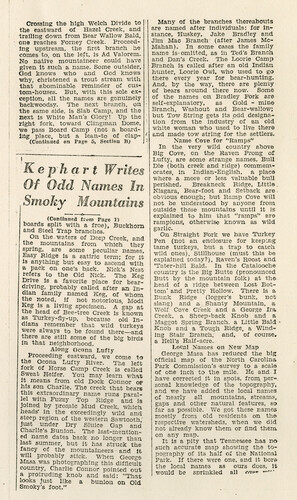

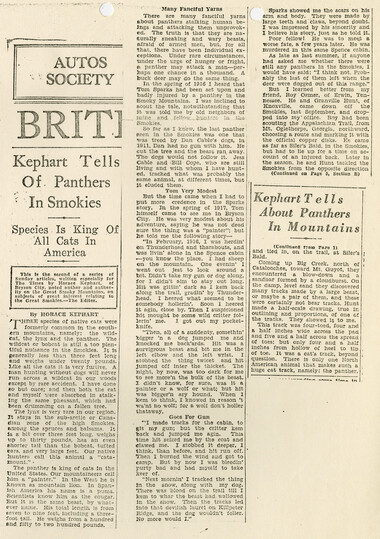
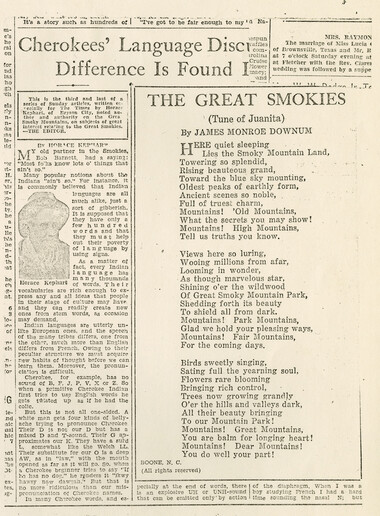





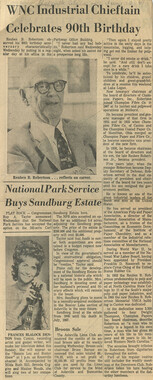
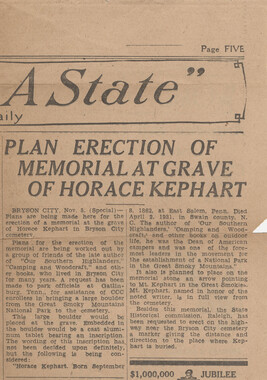






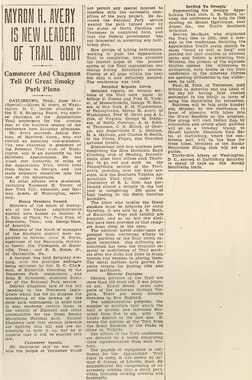



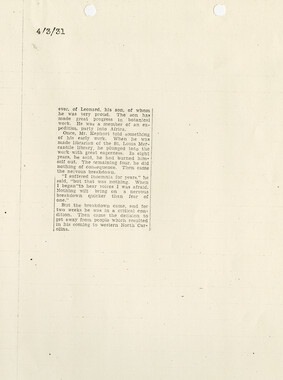


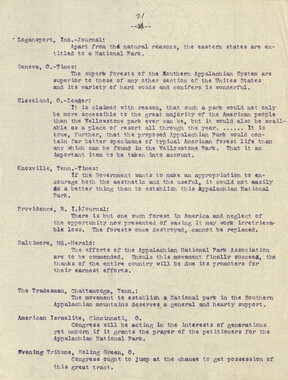

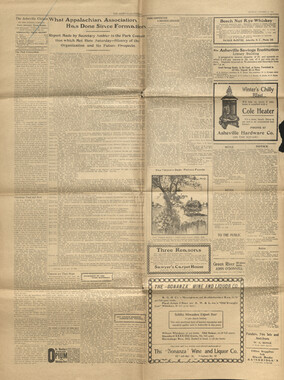

.jpg)
